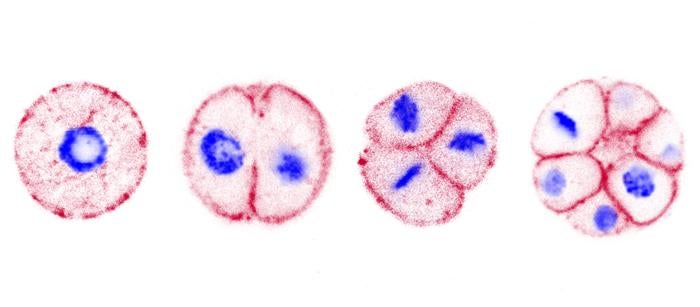Scientists may have finally cracked puzzle of what came first: chicken or egg
Genetic tools needed to create eggs existed long before nature invented chicken
Your support helps us to tell the story
From reproductive rights to climate change to Big Tech, The Independent is on the ground when the story is developing. Whether it's investigating the financials of Elon Musk's pro-Trump PAC or producing our latest documentary, 'The A Word', which shines a light on the American women fighting for reproductive rights, we know how important it is to parse out the facts from the messaging.
At such a critical moment in US history, we need reporters on the ground. Your donation allows us to keep sending journalists to speak to both sides of the story.
The Independent is trusted by Americans across the entire political spectrum. And unlike many other quality news outlets, we choose not to lock Americans out of our reporting and analysis with paywalls. We believe quality journalism should be available to everyone, paid for by those who can afford it.
Your support makes all the difference.A fossilised prehistoric organism discovered in 2017 has led scientists to conclude that eggs emerged long before the first animals evolved, implying that they came before chicken.
Chromosphaera perkinsii, a unicellular organism found in Hawaii, first appeared at least one billion years ago and underwent cell division to produce what resembled a precursor to eggs.
Scientists from the University of Geneva found that this organism formed multicellular structures bearing striking similarities to animal embryos.
The findings, published in the journal Nature, indicate that eggs existed long before the appearance of the first animals.
“Though Chromosphaera perkinsii is a unicellular species, this behaviour shows that multicellular coordination and differentiation processes are already present in the species, well before the first animals appeared on Earth,” study lead author Omaya Dudin said.

Single-cell life forms like yeast or some bacteria appeared on the planet long before multicellular organisms like animals, which developed from a single egg cell into complex beings.
This embryo development process followed very particular stages known to be remarkably similar between animal species.
Researchers suspected that the process evolved much earlier, dating back to a period well before the appearance of animals.
But exactly how this transition from unicellular species to multicellular organisms occurred was still very poorly understood.
In the new study, scientists assessed the ancestral life form C perkinsii, which separated from the animal evolutionary line over a billion years ago, and found key insights into the mechanisms behind the transition into multicellular life forms.
They found that once C perkinsii reached their maximum size, they divided without growing any further and formed multicellular colonies resembling the early stages of animal embryos.
The colonies, comprising at least two distinct cell types, persisted for around a third of their life cycle, a phenomenon researchers deemed “surprising” for this type of organism.
The way these colonies divided with a distinct three-dimensional structure was “strikingly reminiscent” of the early steps involved in embryonic development in animals, they said.
Based on this discovery, researchers said the genetic tools needed to “create eggs” existed long before nature “invented chickens” over a billion years ago.
There was a possibility though that the mechanisms behind multicellular development could have evolved separately in C perkinsii, and researchers said they hoped further studies of the organism would reveal which was the likelier case.
“It’s fascinating, a species discovered very recently allows us to go back in time more than a billion years,” Marine Olivetta, another author of the study, said.

Join our commenting forum
Join thought-provoking conversations, follow other Independent readers and see their replies
Comments